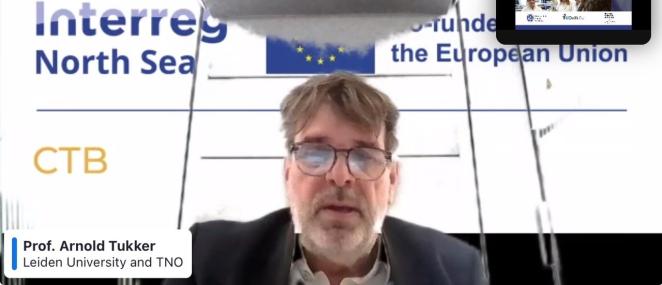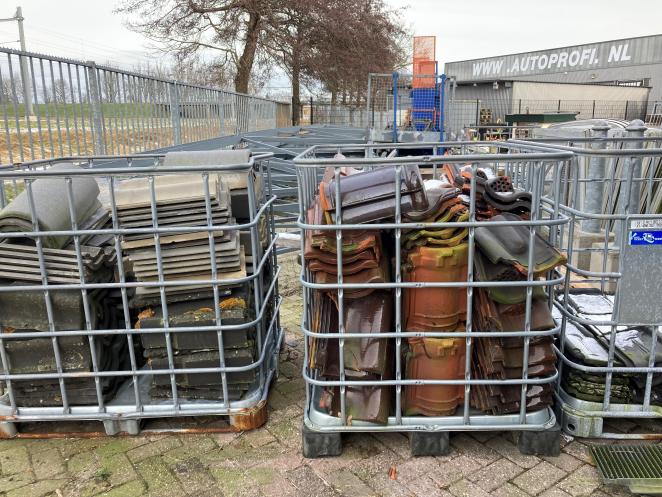It’s all go for our CTB partners from Linnaeus University. Having just landed back in Sweden after the project’s official kick-off in The Netherlands, they hosted a hybrid event on Circular Construction on 18th January. The webinar was led by Prof. Arnold Tukker of Leiden University in The Netherlands, who’s expertise on this topic is highly valued and respected worldwide.
Arnold Tukker is Professor of Industrial Ecology and, until recently, Scientific Director of the Institute of Environmental Sciences at Leiden University. He retains a small position at the Dutch not-for-profit research organization TNO. Arnold set up 15 million Euro in EU projects in which the world’s most ambitious and detailed global energy/resource/economic input-output database (EXIOBASE) was built.
He outlined what is needed within various systems.
- Natural system: keep within planetary boundaries
- Economic system: limit use of resource and emissions
- Social system: ensure well-being for all
- Governance & response functions: enable all the above

Prof. Arnold Tukker, Circular Construction expert.
EU strategies & initiatives
Diving deeper into each of these categories, the participants heard more details of the pressures and critical challenges that form the boundaries impacting our planet, including climate change and emissions, shifting land use and the loss of biodiversity. “Key answer is to do more with less”, says the professor, referring to the EU Circularity package and EU Raw materials initiative.

Repair, re-use, recycle
The EU’s transition to a circular economy aims to reduce pressure on natural resources, create sustainable growth and jobs, and is necessary to achieve the 2050 climate neutrality target and to halt the loss of biodiversity. The new circular economy action plan was adopted in March 2020 to accelerate this transition and promotes repair, re-use, recycling and re-manufacturing.
Secure sustainable supply
The EU also aims to reduce its consumption footprint and double the use of circular material in the coming decade. Minerals, metals and advanced materials are key enablers of the green and digital transition. Raw materials are critical to preserving the competitiveness of the EU’s most strategic economic sectors. Currently only a fraction of the most relevant raw materials is produced in Europe. Through innovative recycling, substitution, processing, mining, and exploration we can change this with a circular economy approach. EIT RawMaterials aims to secure a sustainable raw materials supply by driving innovation, education, and entrepreneurship across European industrial ecosystems.
Key answer is to do more with less.
Data, tools & mapping
Professor Tukker: “We can prolong the life of buildings, reusing materials. There are some useful tools available (using global MRIO databases, e.g. Exiobase) to create a multi-regional Input/Output overview that charts imports and exports by sector and country etc. thus mapping global value chains. There are major disparities in production and consumption footprints per country, while global interdependencies also play a significant role.”
Combined measures
Most relevant for the CTB audience were some insights specifically targeted at the building sector. Circular construction should not only be decomposable and re-usable, but the design should also be supported with standardized materials. An inconvenient truth is that a growing economy inevitably needs virgin material. Even with the best possible recycling, there is always some degradation, so building new infrastructures still requires new materials and energy upgrades. To make a real difference in circular construction, a combination of measures is required, including:
- A cap on floor space (also reduces heating/cooling)
- More efficient production of steel, cement, bricks, aluminum
- Increased re-use of materials
- A green energy transition
- Building with low carbon impact materials (e.g. wood)
- Extending the life expectancy of buildings, refurbishment
- Using low carbon steel (i.e. produced with green H2)
- Recycling materials –up-cycling and not down-cycling
Revisit the webinar
The webinar ended with a lively interactive Q and A session and some discussion amongst the 35 online and ‘live’ participants. Many thanks to CTB colleague Krushna Mahapatra for the invitation.
Feel like you’ve missed out or would you like to revisit the event? You can access the recorded webinar here.
Quote of the day:
To achieve our circular goals, we must be ready to sacrifice something!
